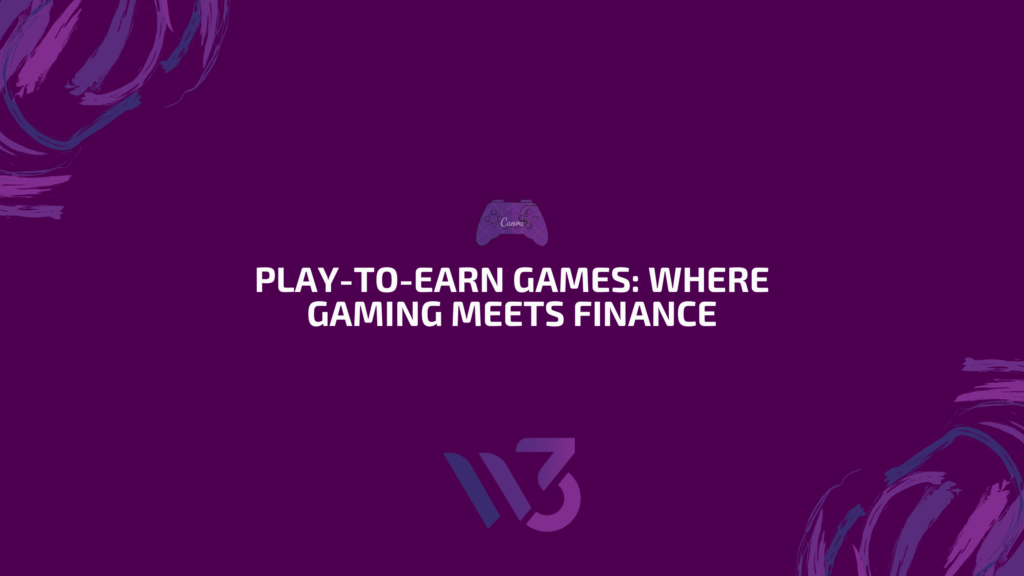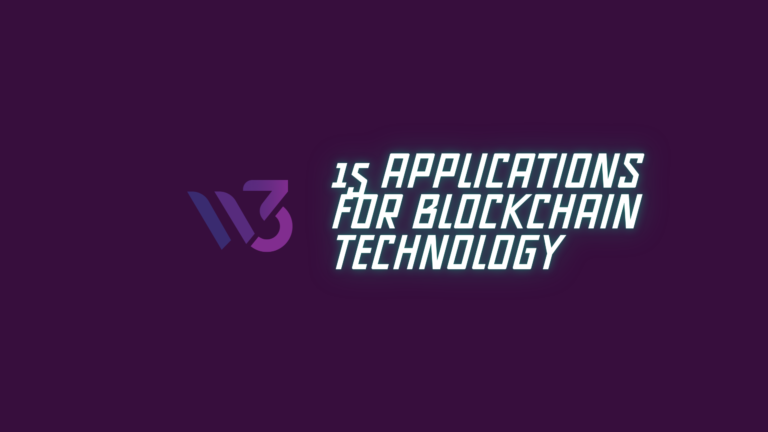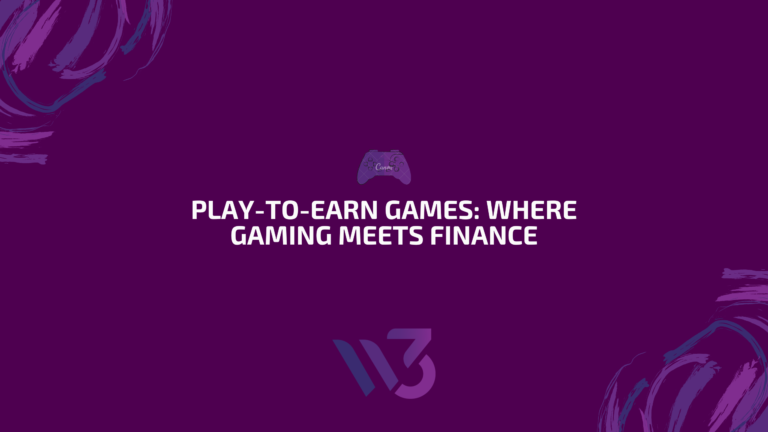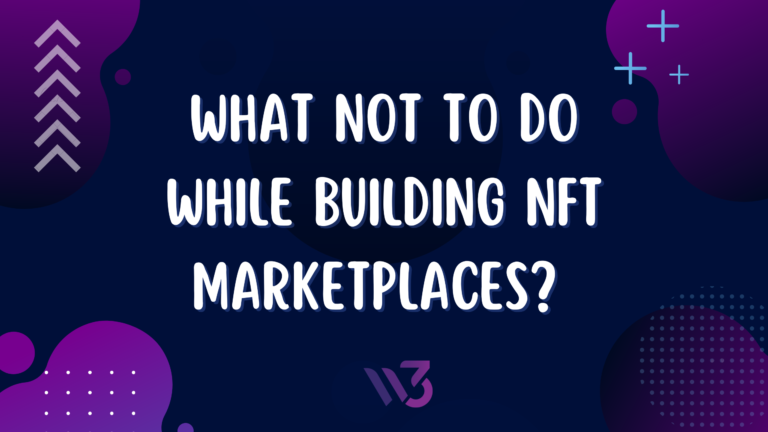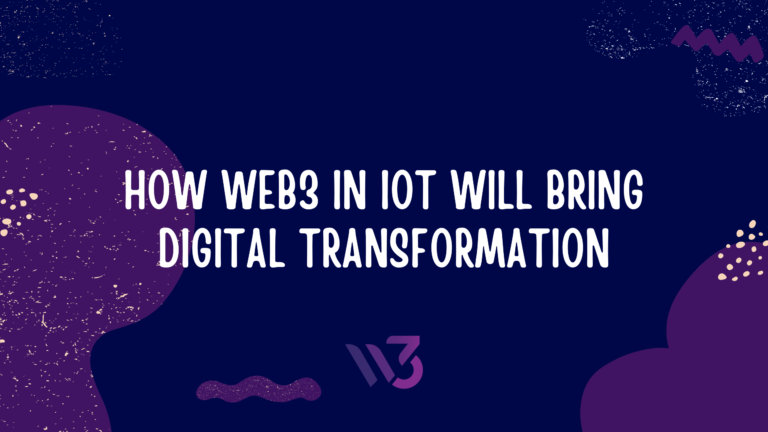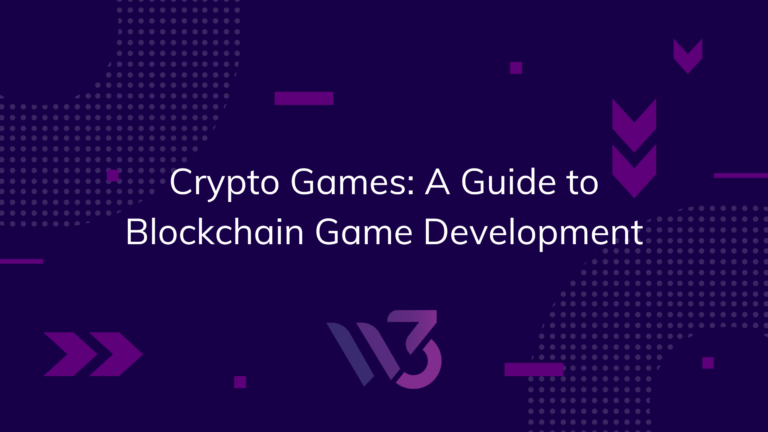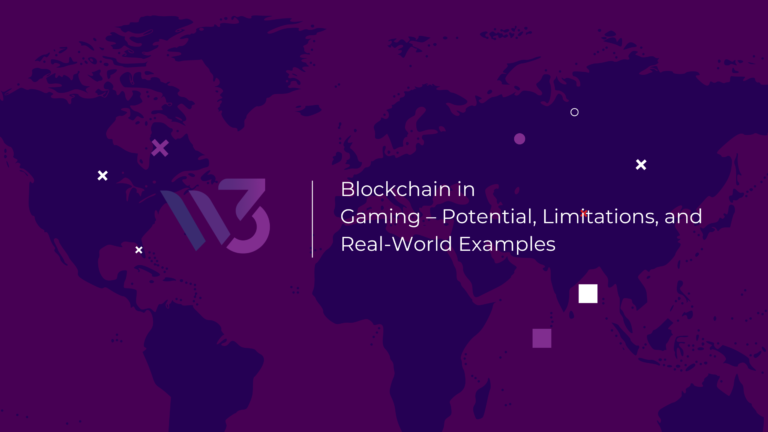Billions of people play video games worldwide, and the entire ecosystem around professional gaming has evolved, creating a wealth of opportunities for gamers. The cream of the crop earns lucrative perks playing as salaried members of big esports teams, sharing in tournament prize money, and sealing in lucrative sponsorship deals. Others earn by streaming their gameplay experiences live on viewing platforms like Twitch Gaming or YouTube Gaming.
Today, video gaming is a multi-billion industry, gaming software and hardware being its major revenue magnets. According to certain sources, gaming has outstripped TV, film, music and on-demand entertainment to become the world’s biggest media category. However, much of the economic activity happening around gaming is centralized and the profits generally go to the makers. Not just that, they also control the game’s content, create policies and make decisions regarding, say, monetization or upgrades.
Although this custodial approach of profit-sharing and ownership has persisted for long, things are changing with the advent of ‘play-to-earn’ games.
Play-to-earn is a gaming business model that has created a stir in the web3 space, and it’s not difficult to see why. Under this unique gaming model, participants earn cryptocurrencies and NFTs or receive them as gifts from other players during gameplay.
Play-to-earn games are undoubtedly the next big thing in the gaming industry. And to be able to tap into their potential fully, it’s important to understand what they are all about. This article offers an insight into play-to-earn gaming, covering areas like their advent, functioning, future and so on. Read on as we explore play-to-earn gaming and its many vital aspects.
Key milestones in gaming evolution and the birth of play-to-earn games
Gaming Consoles
The invention of gaming consoles may be considered the biggest milestone in the evolution of gaming. Gaming consoles such as the Atari created a stir in the gaming space. However, Atari had no internet capabilities, which proved to be a setback for it and paved the way for more advanced gaming consoles such as Sega Dreamcast. Sega Dreamcast came with a built-in modem for internet support and online play, which was a breakthrough in the history of gaming as players could now compete globally. However, people still needed consoles and games to take part in such online gaming competitions. Additionally, games like Halo franchise were only compatible with Microsoft’s Xbox. Clearly, console gaming had setbacks which led to other innovations like mobile gaming.
Mobile gaming
The advent of mobile gaming caused a significant decline in the popularity of consoles and PC gaming. The emergence of smartphones eliminated the need for players to sit in front of their PCs or consoles to play their favorite games. People could now play whenever and wherever they wanted. The mobile technology boom has completely transformed the gaming industry by bringing in diverse games, innovative revenue structures and a whole lot of new gamers to the scene.
Although both consoles and mobile gaming have revolutionized the gaming industry, they are meant solely for entertainment. Gamers receive no financial benefits from playing them. This compelled the gaming community to adopt a more user-centric approach, and come up with innovative gaming models such as play-to-earn that involved financial rewards for gamers.
Play-to-earn games
Play-to-earn, as the name suggests, involves making money through gameplay. The best thing about this video gaming model is that it offers both rewards and entertainment. The players create value not just for themselves but also for other players and game developers. Players’ involvement in such games is rewarded with tokens or cryptocurrency that can appreciate over time, bringing real profits to players.
What are play-to-earn games?
Play-to-earn games are decentralized games that allow players to earn rewards by completing tasks, combating other players, and progressing through different game levels. These rewards can be in the form of crypto tokens and NFTs such as virtual real estate, skins and weapons. Since play-to-earn games are decentralized, players can trade and transfer their assets outside of the game in exchange for fiat currency without relying on the permission or rules of publishers or other third parties.
Interestingly, many play-to-earn games carry the essence of traditional video games, which is an important reason why these games have received ready acceptance from gamers. For instance, Axie Infinity, one of the most popular blockchain-based play-to-earn games, is based on the same “breed and battle” model that Pokemon introduced in the 1990s. On the other hand, NBA Top Shot is built on the “collect and trade” style that has prevailed in so many games for decades.
Play-to-earn also borrows heavily from decentralized finance. The play-to-earn gaming model aims to make regular players the governing force behind all major decisions pertaining to the gaming industry. Play-to-earn NFT games have resulted in a player-owned economy where players can produce, collect, trade, or lend scarce in-game items, and earn monetary benefits from them.
At the heart of the player-owned economy are governance tokens, which a lot of play-to-earn games use as in-game assets. Each governance token gives its owner the power to take part in the game’s development and other important decisions like allocation of funds. The governance power one holds is proportional to the number of tokens they own. Such a system is transparent, just to all and allows for fair item trading among players. Thus, a player can not just enjoy the game but also receive a part of the game’s revenue, unlike conventional gaming business models where all the revenue goes to publishers. Play-to-earn games aim to create player-owned universes, where players enjoy the freedom to both play and earn.
How does the play-to-earn gaming model work?
The working principle behind play-to-earn games is simple: players earn cryptocurrencies, native crypto tokens or NFTs as rewards or gifts through in-game activities such as task completion, competing with other players, winning contests and progressing through different game levels. Since these rewards can be encashed in an exchange or NFT marketplace, you can earn real money playing these games.
Although getting started with play-to-earn gaming is easy, considering the vast number of title options that players have, you must first decide the game and gaming experience you want for guaranteed success. Here is Axie Infinity’s player onboarding process to help you understand how to get started with crypto gaming.
- Create a Ronin wallet.
- Buy three Axies from the official marketplace. If you don’t want to buy the Axies, you can apply for the game’s scholarship to play for free and see how you like the game.
- Next, you need to create an account on Axie official marketplace, and set up email and password for the account.
- Lastly, download Axie Infinity and start playing. There are separate versions of the game for desktop and mobile users.
Although different play-to-earn games have different steps in their player onboarding processes, core aspects like wallet integration and account creation remain the same.
It’s worth noting here that play-to-earn games are also referred to as crypto games as most of them allow players to earn cryptocurrency through gameplay. However, the rewards earned by players can also be in the form of NFTs and the game’s native crypto tokens. Let us talk about these rewards one by one.
Native Cryptocurrency
A game can have its own cryptocurrency in the form of tokens. These tokens work like typical cryptocurrencies and have real-world value. The best example of play-to-earn games with native crypto tokens would be Axie Infinity where players are rewarded with two types of native tokens- AXS and SLP (built on the Ethereum blockchain). Just like any cryptocurrency, the value of native currencies fluctuates. Players can buy and sell these tokens whenever it’s favorable to do so as per market trends.
Other popular native cryptocurrencies include SAND from The Sandbox and MANA from Decentraland.
Existing Cryptocurrencies
Many games rely on existing cryptocurrencies such as Cardano, Bitcoin, Eth and the like to offer rewards to their players. And that is why a lot of games are named after the cryptocurrencies they use. Bitcoin Pop and Bitcoin Tycoon are two popular examples. There are also games that use the term “crypto” in their names as a way to indicate that they are based on the play-to-earn model. Examples include Crypto Dragons and CryptoKitties.
Non-Fungible Tokens
Some games also offer rewards in the form of NFTs. From in-game weapons and characters to skins and virtual real estate, in-game NFTs come in all sorts of different forms. These virtual collectible assets are unique, irreplaceable and hugely popular among players. However, they are stored on blockchains and not the games where they appear. Alien Worlds, Zed Run and Gods Unchained are some of the most popular play-to-earn NFT games.
Play-to-earn games: What sets them apart in the world of gaming?
According to a report by DappRadar, play-to-earn NFT games recorded over a 2000% increase in their user base within the first quarter of 2022. The unique idea of offering players financial rewards that are profitable in real life makes play-to-earn games stand out in the gaming industry.
As per projections highlighted in a report by Statista, the play-to-earn NFT games market will grow to USD 3618.4 million by 2028. Clearly, play-to-earn will see greater adoption in the future with major players in the gaming industry already starting to explore the untapped opportunities that lie within the world of play-to-earn gaming.
With so many of the existing play-to-earn games rewarding players with NFTs, players can also own unique virtual assets and sell them in-game or in an NFT marketplace outside of the game for a profit.
It’s worth mentioning that the incorporation of NFTs in video games has indeed proved game-changing for both players and developers. For players, it has created a new stream of income. And for developers, it means greater player engagement and higher game demand.
Play-to-earn gaming also shows the potential of blockchain technology in general. For instance, no centralized platform like Google or Facebook rewards users with valuable digital assets to use within or outside of their premises. But play-to-earn games reward participation with items of real-world value.
As a matter of fact, blockchain technology has broadened the horizon of what is possible within the gaming space and allows us to imagine a world where people can do amazing things like playing interactive games within the virtual reality of a metaverse or earning a living through gameplay. It offers an escape from the centralized dystopian world where we spend all our time in a realm we don’t control.
Comprehensive blockchain game development services for building custom decentralized gaming projects of diverse scopes and sizes
Launch your dream play-to-earn game with LeewayHertz
Are play-to-earn games free to play?
An important question that surfaces at this point is, “Are play-to-earn games free to play?” Well, different play-to-earn games use different modes of revenue generation. Some games offer free onboarding, and offer rewards based on players’ performance and extent of engagement; others require upfront financial investment and are known as “pay-to-earn” games.
Now, how do free games generate revenue? In Axie Infinity, for instance, you need three Axies to start playing the game, for which you need to pay in hard cash. But there is a reason why Axies cost money: they are NFTs minted on Ethereum, and, hence, can be traded even outside of the game’s universe. AXS staking, selling SLPs and breeding rare Axies are some ways in which gamers make money playing this game. Similarly, some games make money by necessitating the purchase of in-game assets to advance in the game. Essentially, each game has its own way to make users pay.
Are play-to-earn games safe to play? What makes them secure?
Since play-to-earn games involve money, it’s natural for players to feel apprehensive about their security or reliability. Hence, before getting started, they want to know if these games are secure, and what ensures their security. Play-to-earn games are secure and safe to play because the currencies and NFTs that players earn for their in-game skills and efforts don’t actually reside within the game’s ecosystem. They are stored on a blockchain. It is almost impossible to modify, copy or delete blockchain data, which means, no tampering is possible with the NFTs and crypto tokens that you earn within play-to-earn games. And hence, they remain safe from theft or damage. A blockchain’s unique properties like immutability help prove the assets’ ownership, rarity and legitimacy.
Such a high degree of security doesn’t exist in traditional video games which often fall prey to hacks and other exploits.
Play-to-earn as a source of livelihood
Smart contracts are at the heart of the crypto economy. These contracts, and not third-party intermediaries, make it possible for resources to move within the decentralized world. Smart contracts facilitate the formation of complex contractual relationships even without the involvement of human coordinators. They have revolutionized and automated all current coordination mechanisms and have resulted in the emergence of a concept of “labor-to-earn” that ensures earning opportunities for all without discrimination, especially the low-skilled category of workers. The three most important “labor-to-earn” models are:
Learn-to-earn/participate-to-earn
These are platforms that reward users simply because of their participation. Learn-to-earn creates a win-win situation for both users and the platform. While users receive rewards for watching videos, reading articles or taking quizzes on the platform, the platform witnesses a higher influx of new users interested in making money. Word of mouth plays a significant role in helping such platforms grow. Minds, a decentralized social media app rewards users with crypto tokens when they post, like or share posts on the platform.
Create-to-earn
NFTs are the backbone of the create to earn model. Creators (artists, musicians, film makers and so on) can make hefty money by minting NFTs of their unique creations and then selling them for a profit.
Play-to-earn
This is the most popular and advanced labor-to-earn model as it offers both fun and monetary benefits. As mentioned above, play-to earn allows players to earn by playing.
People all over the globe are making a side hustle out of play-to-earn games. These games have a huge earning potential, and are emerging as an important contributor to the modern economy. According to some sources, average players can make around a few hundred dollars per month just playing a couple of hours per day. Hence, play-to-earn games can be a great way for people who have 9-5 jobs to make extra earnings while still having fun.
This has opened up an entirely new and exciting way of income generation for people across the globe, especially those living in developing countries. Many now play “play to earn” games as a full-time job, especially in countries like Venezuela and the Philippines.
Clearly, crypto-economies are shaping the future of work.
The future of play-to-earn games
As blockchain technology hits the mainstream and metaverse evolves, we will see a larger cross-section of people playing play-to-earn games. Reddit co-founder, Alexis Ohanian even says that in the next five years, gamers will only like to play games that allow them to earn (play-to-earn games). After all, people are increasingly becoming conscious and want to be compensated for their time.
Experts also believe that it’s not too far away in the future when it will be possible to earn a good livelihood entirely as a professional gamer.
Up until now, only expert gamers were making money by playing games, but play-to-earn allows anyone to earn, even if they don’t have the best gaming skills. Most of these block-chain based games involve established cryptocurrencies, which makes them far more valuable than non-blockchain games. The earning potential of these games acts as a magnet for a diverse community of gamers having different levels of gaming expertise and experience.
These are reasons why so many millions of dollars are being pumped into blockchain-based games. Such massive investments by industry bigwigs and future growth predictions by experts all point at one thing- play-to-earn games are here to stay.
What are play-and-earn games? Are they a better alternative?
Although play-to–earn is an innovative gaming business model and extremely popular all over the globe, a cross-section of gamers believe that it is causing a shift of interest in developers and publishers. Their focus is slowly shifting from delivering quality gameplay experience to offering incentives in a way that makes gamers come for more. This shift in focus from gameplay quality to incentivization might prove detrimental to the health of the gaming industry in the long run. After all, lucrative in-game reward schemes can only attract gamers; to be able to retain players for long, games must offer a fulfilling gameplay experience.
No business model, no matter how profitable, should be a reason for game producers to lose sight of the basic value proposition of gaming: delivering a truly unique, entertaining and engaging gaming experience.
That said, the play-to-earn gaming model should not be seen in a bad light. In fact, its incorporation in games can act as a hook for newly launched blockchain-based games. Hence, both incentivization and gameplay experience are important for a game’s success. The gaming community is, therefore, in favor of a new gaming business model called “play and earn” that combines play-to-earn and quality gameplay. This model, targeted at all types of audiences- those who want quality gameplay as well as those who want to make money, is definitely more inclusive than play-to-earn.
Play-and-earn games are designed in a way that makes virtual objects linked to tokens and NFTs look like a pleasant bonus rather than the ultimate objective of a game.
Gaming should not feel like a job or a reward scheme. The industry must do everything it can to eradicate fraud and create gaming business models that allow earning to be an added benefit, rather than the game’s sole purpose.
Endnote
The 21st-century labor force is clearly redefining the meaning of work. They are moving from traditional earning methods to innovative options like play-to-earn games that offer fulfillment and contentment along with monetary benefits. Even though most of us still work in centralized organizations managed by humans, the future might see us all working for decentralized entities that would behave like cooperatives and not corporations. Under such a decentralized protocol where rules, regulations, and commitments will all be enforced by smart contracts, it is reasonable to assume that there will be greater fairness at work and higher job satisfaction. Play-to-earn games definitely hint at the beginning of such a revolutionary change.
Resource: leewayhertz
